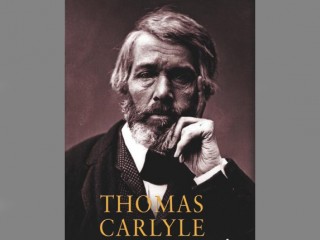
Thomas Carlyle biography
Date of birth : 1795-12-04
Date of death : 1881-02-05
Birthplace : Dumfriesshire, Scotland
Nationality : Scottish
Category : Famous Figures
Last modified : 2010-05-27
Credited as : Satirical writer, Sartor Resartus, Emerson
Coming from a strict Calvinist family, Carlyle was expected by his parents to become a preacher, but while at the University of Edinburgh, he lost his Christian faith. Calvinist values, however, remained with him throughout his life. This combination of a religious temperament with loss of faith in traditional Christianity made Carlyle's work appealing to many Victorians who were grappling with scientific and political changes that threatened the traditional social order.
Known as one of Britain’s greatest essayist and a prolific historian, Thomas Carlyle spoke out against the materialism of the day due to his beliefs against the industrial revolution. Although his life would be filled with bouts of loneliness, he worked on several publications that brought him international fame.
Born to a stonemason in Scotland, young Thomas was greatly influenced by his mother’s Calvinistic beliefs. He attended Annan Grammar School and later Edinburgh University and actually excelled in the field of mathematics. His natural gift for logic and mathematics earned him a post. However, he always desired to be a writer and decided to give up his pursuits in order to be published. He wrote Life of Schiller, which was published in a prominent magazine in London. He also translated Wilhelm Meister’s Apprenticeship, a work by Goethe.
After falling in love with Jane Welsh, the two moved into a small farmhouse, which was owned by her parents. There, he wrote several prominent essays that were later grouped into different genres according to their themes. These included important essays on Burns and Richter, as well as Goethe, who he admired. Additionally, he started publishing more about society and social reform abhorring the modern Victorian Era in which he lived.
Thomas Carlyle’s most known work is Sartor Resartus, which was published in Fraser’s Magazine and went on to be published as a book in 1838 thanks to Ralph Waldo Emerson who brought Carlyle’s essays back to the United States. In the book, Carlyle mixes styles and genres that often conflicted with each other. He also explores how society will keep up with the advancement of science and technology.
Following the release of his essays, Carlyle wanted to put his mind into something more long term. He then decided to write about the French Revolution. His work was so grand that it won him national fame and even delves into how religion affects man. His book was different in that it wasn’t straightforward, dry history, but was scenic and dramatic, detailing the events, making the reader feel involved. He was made a lord at Edinburgh University and continued working on translations and historical pieces for the rest of his days.
















